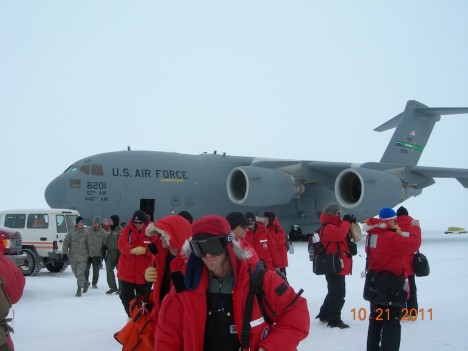

By Michelle Koutnik
It has been a busy first week in Antarctica! We planned to stay 10 days at McMurdo station so that we could complete all of our required safety training and prepare all of our food, shelter, and equipment for the traverse. There are many people in McMurdo who support our field research and we thank them for all of their hard work in helping us make our field season a success: They assist us in getting all of our food and camping gear, coordinating flights to Byrd Camp, and sending all of our cargo (and our team!) to Byrd.
Here’s a summary of everything we did this week:
We spent one day testing our tents, sleeping bags, and kitchen supplies, and then we packed it all into duffel bags and boxes that we will be able to load onto the sleds that we will tow behind our snow machines. There are so many small things (like lighters, flags to mark our camp, insulated water bottle holders, batteries and much more) that we must remember to pack, but I’m glad to say that we have put all of this together now!
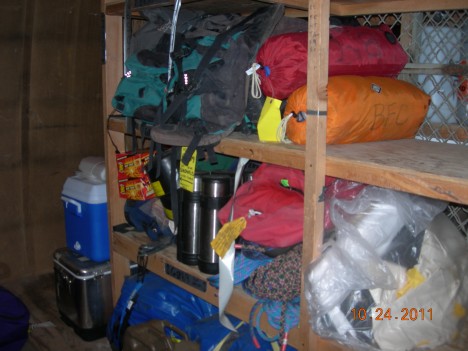
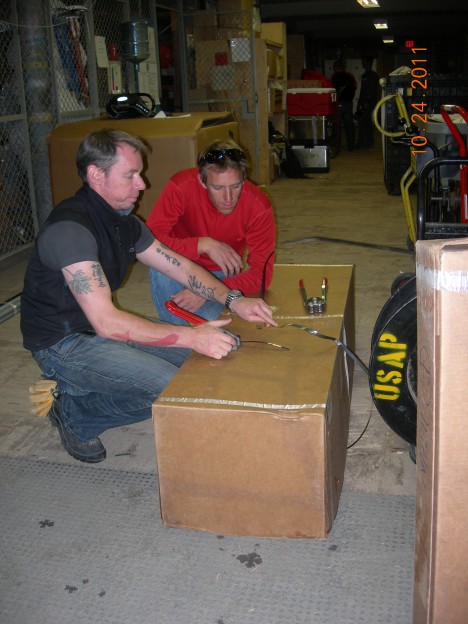
We spent a few days going through safety training — anyone new to Antarctica went on a two-day overnight trip to learn how to be comfortable and safe in the harsh Antarctic environment, and those of us returning to Antarctica took an afternoon refresher course.
We had other meetings to arrange our communications with McMurdo Station when we are out on our self-supported traverse. We must call in every day: if we were to miss a call (we won’t!), a search and rescue team would be deployed within an hour, and everyone would be on alert.
We also checked our equipment that had arrived to the station so that we know it will work in the field. And, most importantly, we picked up our food — including over 200 chocolate bars!
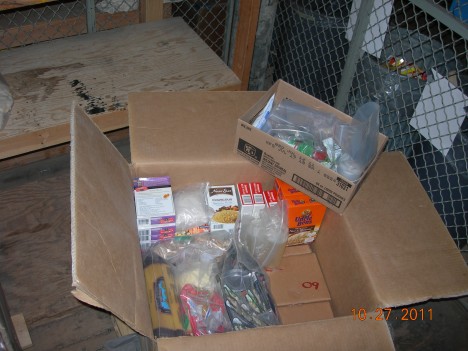
Today we completed snow mobile training, so we now know how to ride and fix the machines once we are out on the traverse. We are almost all ready to go now and we hope that the weather will be good the next few days so that we can fly to Byrd Camp soon.
By Lora Koenig
It is Sunday night, November 27, and I am sitting in our McMurdo office with Michelle. We had a great Thanksgiving weekend. Here on the Ice we celebrated Thanksgiving on Saturday, November 26, instead of on November 24 (the day it was celebrated in the United States). The reason for this is that people in McMurdo work 6 days a week (Monday through Saturday) so when there is a holiday, it is always celebrated on Saturdays to get a full weekend off.
On Friday evening Randy, Clem, Ludo and Jessica toured Discovery Hut. Saturday, our Thanksgiving Day, started with the entire team running in the McMurdo Station Turkey Trot, a 5K race over to Scott Base and back. It was Jessica’s first 5K race ever and she can now say that she ran her first 5K in Antarctica, which I imagine is quite a unique story.
The day concluded with a very nice dinner that included all of the traditional Thanksgiving fare along with handmade truffles.

There was one thing noticeably missing at Thanksgiving dinner, and that was “freshies.” Freshies are how people on the Ice call fresh vegetables. There were no freshies because no plane has arrived McMurdo since November 21. This means there has been no resupply of vegetables, no new people, and no incoming cargo.
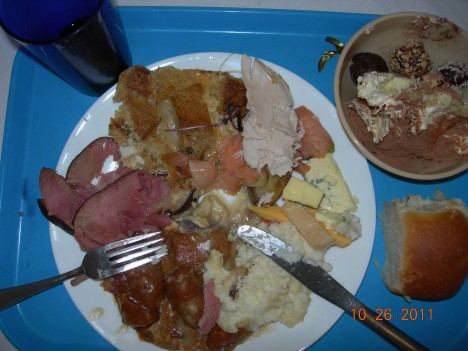
Having plane delays due to weather is common and expected in McMurdo. Normally, this would have little effect on us, besides the occasional craving for a green salad, but this year is worse, because the shipping contractor made a mistake. All of the radars that we shipped from Kansas were supposed to be here when we arrived, but they were not.
During our time in McMurdo, we have to complete the following tasks as quickly as possible so we can get on a plane to the field:
1) Find our science equipment and traverse equipment
2) Test all of our equipment to make sure it works.
3) Put all said equipment in the cargo system to get shipped to Byrd and
4) Complete all training and safety classes (See Ludo’s post).
Once these steps are completed, we can schedule our flight to Byrd. We had planned to leave for Byrd on November 30, and we have completed all of our tasks (except for one additional field safety training on Monday, November 28, and a snowmobile training on Tuesday, November 29.) But we cannot leave McMurdo until we get the radars: They are essential to our science. So for now we are sitting and hoping that the next plane that arrives to McMurdo will carry our radars. If delays continue, we’ll have to switch to plan B (or C, or D).
Right now, Plan B is that Clemont may have to stay behind to receive the radars while the rest of the team goes ahead to Byrd camp. But hopefully, the radars will arrive before our plane leaves for Byrd Camp. As soon as the radars arrive, we will test them to make sure nothing broke during shipping, since it is easier to fix things in McMurdo than while in the field. Then we will pack them again for the trip to Byrd.
The weather forecast for Monday doesn’t look great, but here’s hoping we get our radars soon. If you want to follow the weather forecast for McMurdo check out this website or you can virtually look out the window like we do, through the McMurdo webcam.
By Ludovic Brucker
Jessica, Randy, and I were scheduled to attend a 2-day Field Safety Training Program (a.k.a. Happy Camper survival school — the nickname makes it sound much more fun than its official title!) on Tuesday and Wednesday, 23-24 November. The training includes spending a night outdoors. I heard about the program months ago and I was definitively looking forward to this enjoyable and educational experience. The invitation read: “Be sure to show up the morning of your course dressed for the field in your Extreme Cold Weather (ECW) clothing. […] Trust us! We want you to be comfortable and safe for the Antarctic environment.” Sweet!
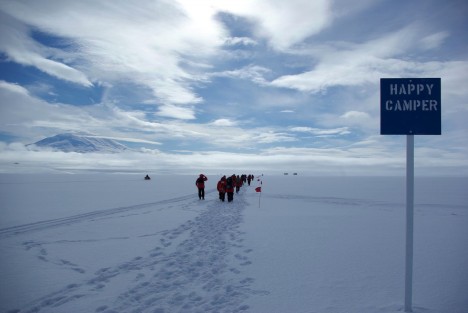
On Monday evening (Nov. 22), I had carefully prepared my ECW++ pack (the ++ stands for water and food). My ECW gear consisted of: socks, bottom and top thermal base- and mid-layers, a fleece jacket, a thick bib, Big Red, boots, and all the basics (such as hat, gloves and glove liners, mittens, face protection, etc). Additionally, we took the sleep kits and tents that we will be using during our traverse. These last two are very similar to the ones you most probably use when camping, but the sleeping bag is much thicker and we also use pads, a fleece liner, warm fleece pants, and a pee-bottle. Our bag also contained other basic and mandatory items, such as sunglasses, goggles, sunscreen, lipstick, and water bottles, among other things.
The first morning of the training was dedicated to listening to lectures about the harsh Antarctic environment and its rapidly changing weather conditions, with focused courses on topics such as how to deal with hypothermia, etc. We then headed out to the field a few miles away from McMurdo station, in the vicinity of Mt. Erebus. It was gorgeous! We were a total of 20 people, all freshly arrived from New Zealand the day before.
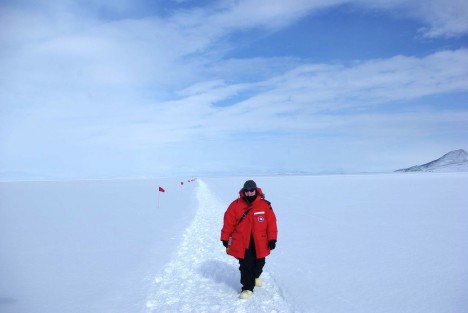
The outdoor session was much cooler (pardon the easy pun) than the lectures and it provided us with information on setting up camps, such as mounting a mountain tent and a Scott pyramid tent. The latter is particularly well suited to Antarctic conditions and it’s inspired in the tent Robert Scott designed for his 1910-13 South Pole expedition. It resists high wind speeds very well; we will have one in our traverse. Obviously, the tent resistance to wind is all about the quality of its snow anchors.
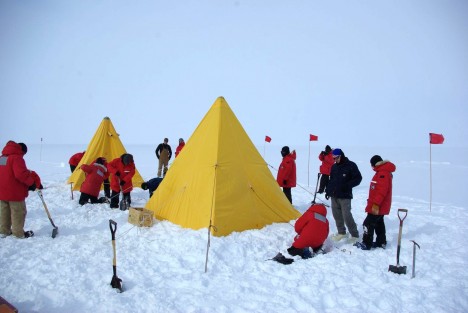
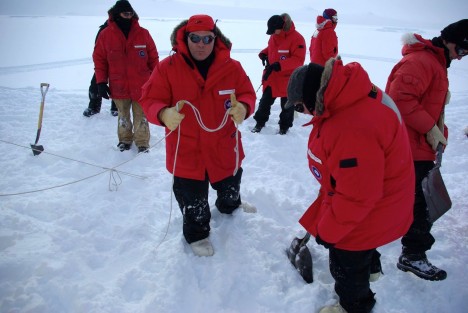
Instead of spending the night in a tent, I opted for the alternative, which was digging up a trench and sleeping in it. “Why not,” I thought. “I’d rather experience my first night in an Antarctic trench when the weather is pleasant and I have resources close by than when I have no alternative to using a trench.”
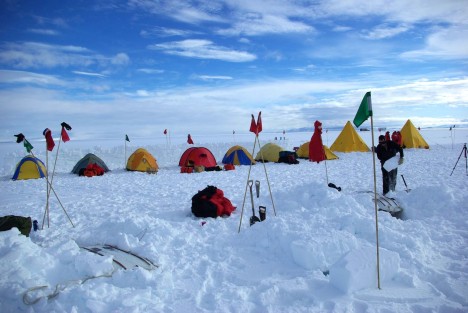

My trench had a narrow opening and got wider a few feet deeper. The ceiling was made of snow bricks covered by lighter snow to close joints and holes. I used my bag as an horizontal ceiling door, right above my head. An easier option would have been using a sled for the ceiling, as others did.


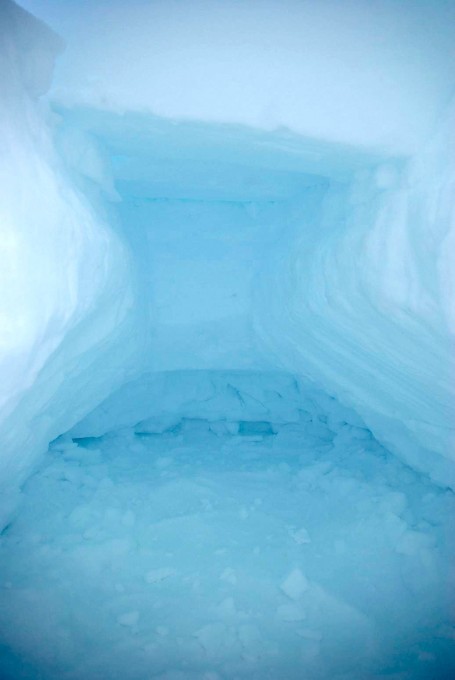
My night was perfect: cozy and unbelievably quiet! I didn’t even notice that the wind had started to blow strongly during the night. I woke up around 4 AM feeling a bit chilly; I ate a chocolate bar, drank some water, and went back to sleep. It was interesting to wake up in the middle of the night and be able to see like if it was day time. At this time of the year in Antarctica, all nights are bright, with only one star in the sky. It felt weird to be sleeping in a snow trench only three weeks after having slept in a hammock hung between palm trees in Big Island, Hawaii. Thanks Lora and Thorsten for these two experiences!
Happy Camper also taught us how to use a High Frequency radio. It is significantly different to use from the common very high frequency radio. After deploying the two 10-meter antennas, we made calls to South Pole station (1360 km, or 850 miles, south of us.)
In summary, these first two days outdoors were successful. However, we expect tougher conditions once we’re out in the field, in the West Antarctic Ice Sheet.
By Ludovic Brucker
Our military C-17 flight landed on 2.3-meter thick sea ice in McMurdo Sound. McMurdo has three airfields that are used at different times during the austral summer. The sea-ice runway is located a few miles from McMurdo, and it usually operates from October to December, until the sea ice begins to break.
For a large number of us, this is our first time on the southernmost continent on Earth and, as you can imagine, landing on McMurdo Sound’s sea ice felt very special. The first minutes off the plane everyone was looking around and smiling a lot.
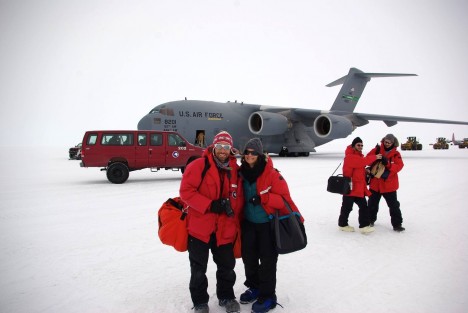
Weather conditions on landing were nice, despite a low cloud that turned everything extremely bright and made it difficult to tell the sky from the snow-covered ice.
Shortly after stepping into the snow, we had to jump into one of the two charismatic vehicles that were ready to transport us to McMurdo Station. We could choose between the famous Ivan the Terra Bus (red as our parka, a.k.a. the Big Red) or an orange delta truck from the early 80s (that vehicle was already carrying people from the runway to McMurdo station before I was born!). Both vehicles have incredibly big tires.
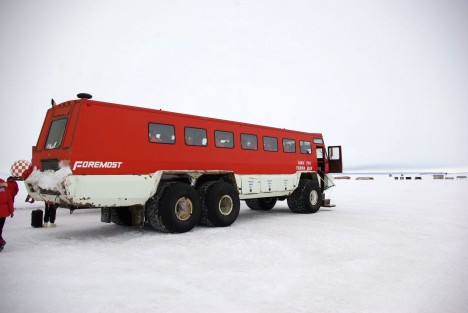

The ride to the station normally takes 15 minutes, but it can be four times longer when sea ice conditions aren’t safe anymore and the runway is then re-located on the ice sheet farther from the station.
After a warm welcome and a short briefing at McMurdo, we got our room keys and headed toward the dormitories. That gave us the first opportunity to walk a bit through the station. McMurdo Station (located 77° 51′ S 166° 40′ E) sits on bare volcanic rock on the coast of Hut Point Peninsula, Ross Island. The station was built in 1955; its 85 or so buildings range in size from a small radio shack to large three-story structures. It is the largest Antarctic station and the logistics center for the U.S. Antarctic Program. There are repair facilities, dormitories (for a maximum of 1200+ people), administrative buildings, a firehouse, a power plant, a water distillation plant, a wharf, stores, clubs, warehouses, and a science and engineering center (where we will spend some time before heading to Byrd, hopefully next week). All the structures are linked by above-ground water, sewer, telephone, and power lines.
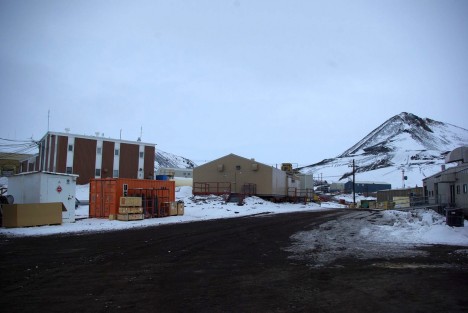
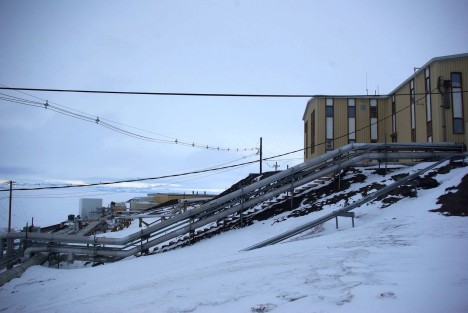
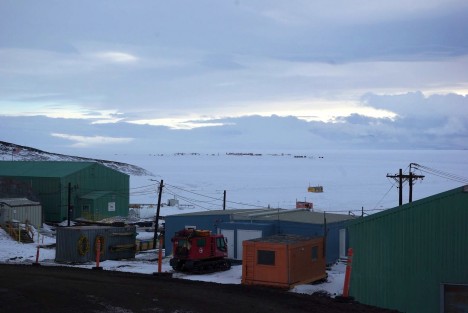
By the time I checked into my room and picked up my bag, a cold, light snow had started to fall. How nice! In the next days, we are going to go through several training sessions, make sure that our scientific equipment made it here undamaged, and prepare our shipment to Byrd station.
By Randy Skinner
Our shuttles to the airport were waiting for us at 4:30AM on Monday, 21 November, as we were scheduled to report at the Clothing Distribution Center at 5:00AM. As we arrived we were instructed to change into our ECW (Extreme Cold Weather) clothes. So we found ourselves hanging out in Christchurch at 65 degrees Fahrenheit, dressed in clothing designed for -20 degrees. It was a bit toasty.
After a short flight briefing and safety meeting we loaded onto busses for the ride to the aircraft. Our flight was on a USAF C-17 transport. It’s a big plane. The center of the fuselage was filled with pallets of gear and supplies for the base. There were 30 seats on each side of the fuselage for passengers, and seats for 25 more in the center at the front. With the plane filled with 80 passengers, including the King of Malaysia, we taxied out and took off into cloudy skies. It was 8:15AM.
Onboard, most people slept due to the early departure time, others searched though the sack lunches we were provided with for the 5-hour flight. As there is always a possibility the plane will “boomerang” (have to return to Christchurch without landing), the lunch is big enough to serve as two meals. It was a lot of food!
As we moved further south the temperature in the plane dropped lower and lower, until people were quite happy to have all of that ECW clothing on. Just before noon, out of the small porthole style windows on the plane (there are 6 windows on the whole plane), the edge of the sea ice, and the continent of Antarctica came into view. The feeling on the plane was electric. Not many people ever have the opportunity to visit this remote land.

We landed on a runway melted into the sea ice at 12:47PM. After thousands of miles, and days of travel and preparation, we were on the frozen continent.
